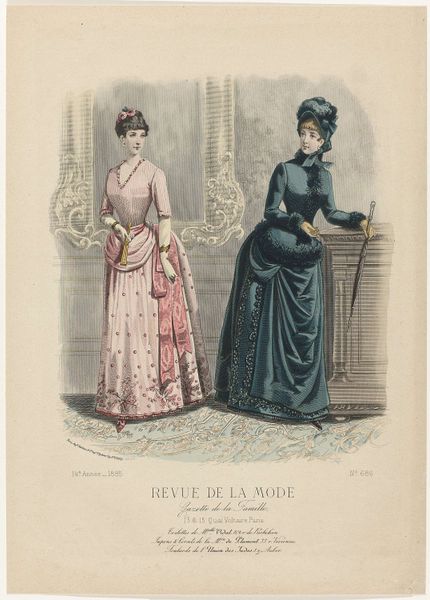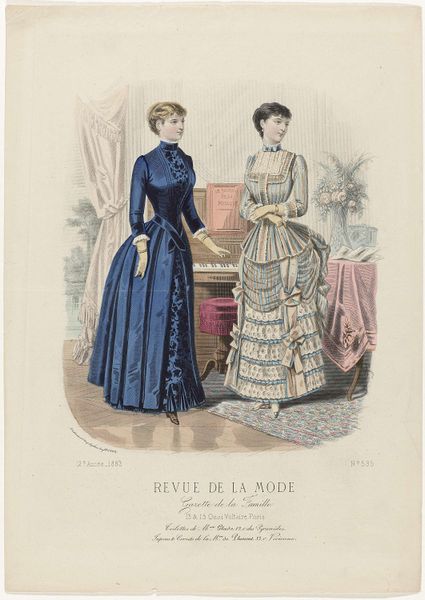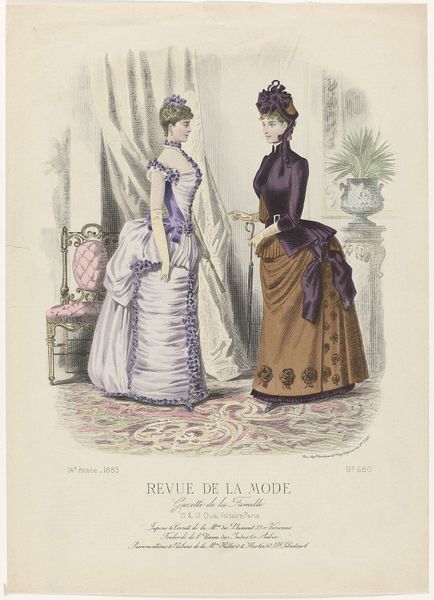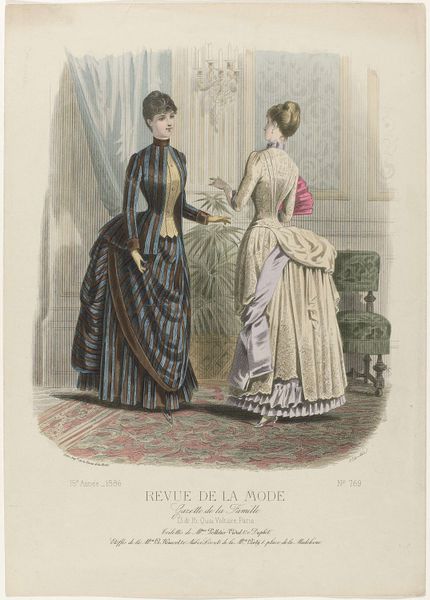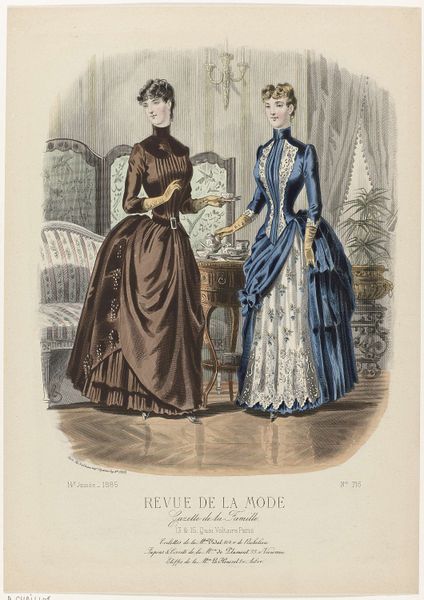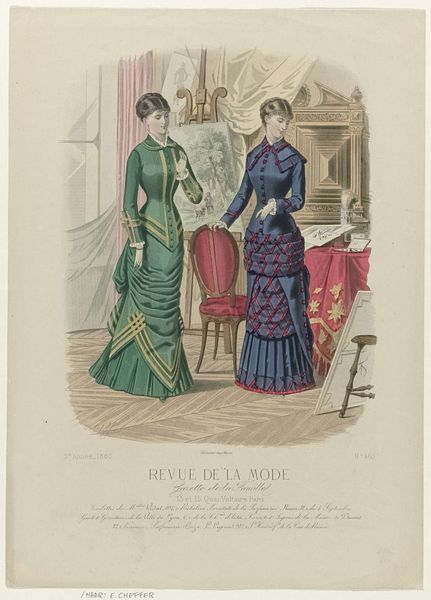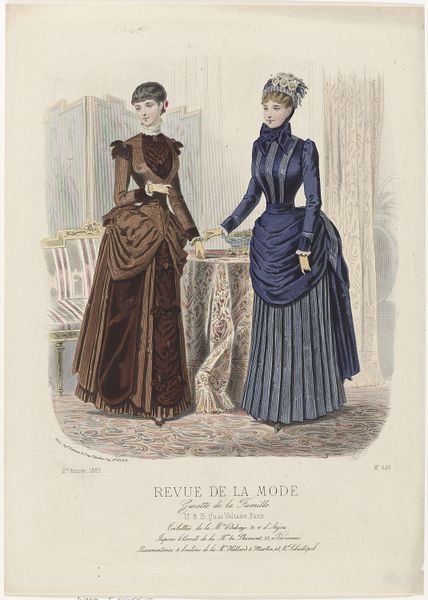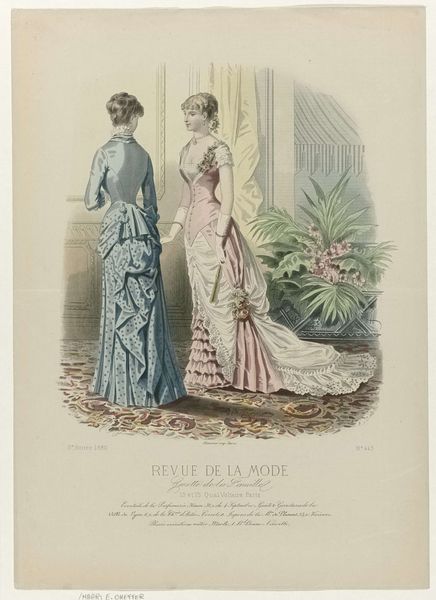
Revue de la Mode, Gazette de la Famille, 1875, 4e année, No. 208: Toilettes de Mme Célin (...) 1875
0:00
0:00
drawing, coloured-pencil, print, paper, pen
#
portrait
#
drawing
#
coloured-pencil
# print
#
paper
#
intimism
#
coloured pencil
#
pen
#
watercolour illustration
#
genre-painting
Dimensions: height 340 mm, width 245 mm
Copyright: Rijks Museum: Open Domain
Curator: Oh, look at this charming print titled "Revue de la Mode, Gazette de la Famille," created by A. Chaillot in 1875. It’s a page from a fashion magazine, showcasing two elegant women and their attire. Editor: Mmm, lace, fur, and flounces! I swear I can almost hear the rustling of taffeta, and feel the weight of all those layers. It's giving me period drama vibes, Downton Abbey but make it French. Curator: Exactly! It’s such a fantastic document of late 19th-century bourgeois fashion, situated within the broader social narrative of the era, reflecting societal ideals of femininity and status through clothing. This piece invites critical reflection on the female identity constructs and power dynamics within those representations. Editor: Absolutely, and what a contrast, one is so severe with that dark floral pattern on maroon and the other looks so puffy and swaddled with that plaid and all the fur, almost like an odalisque wearing a blanket for warmth. I wonder which one was actually more comfortable or socially rebellious. Curator: I think your reflection strikes at the heart of the matter. What are the conditions that led to such extreme fashion? If we deconstruct these garments, we expose the layers of expectation pressing on these women. Who has the liberty to make bold choices within a rigid societal frame? Editor: Oh, without a doubt. It's as if the fashion itself is a form of self-expression—a quiet protest perhaps. Did that plaid outfit let her disappear more? Does that intense, high-necked frock give more authority? Perhaps these women are characters in a play they've composed themselves. Curator: And we as viewers, decades later, engage in our own act of interpretation and rewrite their narratives through the lens of contemporary concerns regarding fashion, identity, and representation. Editor: So true! What starts as a quaint peek into the past twists into a mirror reflecting where we've been, what we've kept, and the costumes we're itching to shed. It’s as good a stage as any to wonder about where to put ourselves in history's messy dressing room.
Comments
No comments
Be the first to comment and join the conversation on the ultimate creative platform.
